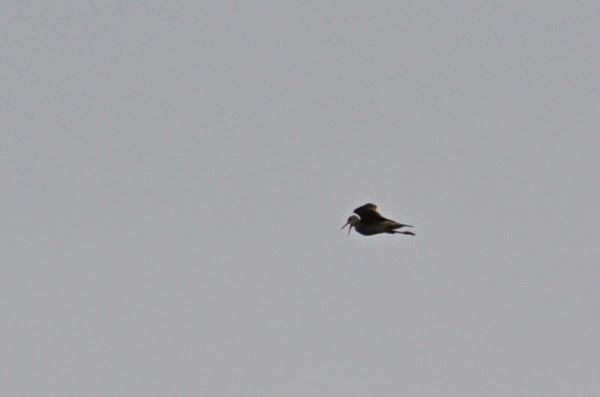In the five-county area of southeastern Pennsylvania including
Bucks, Chester, Delaware, Montgomery, and Philadelphia a cumulative total of
379 species of birds of have been tallied in eBird.
The cumulative list for the month of June is 215 species.
This is higher than the months of January-March, and on par with July (214
species), but otherwise is one of the lowest periods of species diversity for
the whole year. Basically everything is on territory in the breeding grounds
and few migrants can be found. Early in the month certain songbirds are still
found migrating (e.g. Mourning, Canada, and Blackpoll Warblers, Olive-sided and
Yellow-bellied Flycatchers, etc.) but following the thrill-ride that is May,
June is often a time to tend to the garden, catch up with friends and family,
or focus on work projects. Diligent birders may focus their efforts on breeding
bird surveys, or even travel away from home to find birds.
But there is stuff to see around here. In fact
June is perhaps one of the least explored months, and is probably as good a
time to find rare birds as any. If you are at loose ends, and thinking
about how to direct your recreational birding energy, consider the following:
 |
| On June 20th of 2013, Alexander Zorach found this, PA's 1st Tropical Kingbird along the Schuylkill River. |
Vagrants & rarities
Some of the only records for certain rarities like
Black-bellied Whistling-Duck, Purple Gallinule, Tropical Kingbird, and
Fork-tailed Flycatcher are from the month of June. If past performance is any
indicator of future return, then targeting habitat for these birds could yield
more sightings. Often we think of Mississippi Kites as a bird to look for more
in late May, but June may be nearly as good a time to search for them. Rare
herons and ibis should be considered too. And rare, more remote species known
to stray at this time should be kept in mind as well, like Neotropic Cormorant,
Anhinga, Wood Stork, and Scissor-tailed Flycatcher, among others.
Night-birding, wetlands & grasslands
So many wetlands and grasslands aren’t surveyed at the
proper time of day and could hold rare breeding species that are more vocal at
night. Chuck-wills-widow may lurk somewhere, or Barn Owl, and is there
conceivably a Black Rail nesting in the region somewhere? Nocturnal listening
can lead to remarkable discoveries. Dickcissel is a later migrant and can turn
up in weedy fields in June. And grassy expanses could hold the unique Upland
Sandpiper; a small curlew that winters in Argentina, and is the only species in
the genus
Bartramia, named for our
William Bartram.
Shorebirds
June is sort of an in between time for shorebirds. Most are
away on the breeding grounds, but there are still some birds moving around, and
not all individuals breed. Many shorebirds take two years to reach breeding
age, and after they migrate north float around more in the middle latitudes,
rather than those in the high arctic. Hitting shorebird spots could be
rewarding especially early in June and late in the month.
 |
| Least Sandpiper, the world's smallest shorebird, is found in wetland areas regionally in June. Listen for their call. |
Cuckoos
Both Black-billed and Yellow-billed Cuckoos continue to
migrate (nocturnally) in June and enter sort of a nomadic period after they’ve
arrived into the Northeastern U.S. as they search for areas with high densities
of caterpillars and other prey species. If you enjoy cuckoos or need them for your year list, June is a good time to bump into them. Knowing their
vocalizations is key. They are heard far more often than seen, and also
vocalize at night while migrating.
Censusing breeding species
Undertaking thorough censuses of all the breeding birds in
your area, and entering the data into
eBird is both fun and valuable, and is a
good excuse to get outside. Building a record of the species in a particular patch at a specific time can
reveal interesting trends over the long-term. This is one area where
recreational birders can make a real impact.













